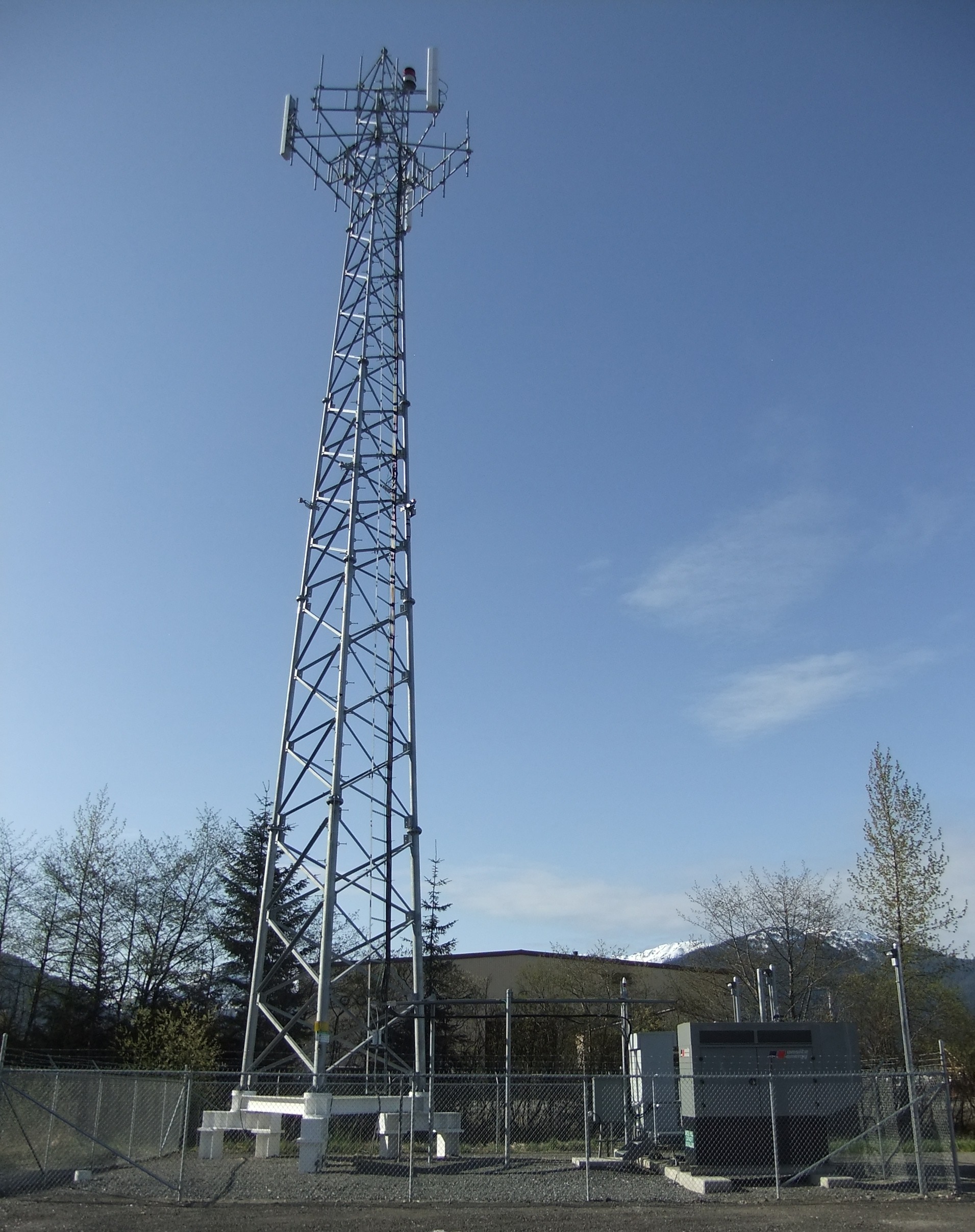
The city is proposing regulations to require cellphone companies to locate new antennas on existing towers, or conceal them.
The Juneau Planning Commission considers the ordinance Thursday in a special work session. On Monday the Assembly took an initial look at the bill.
It comes after several recent public hearings and lots of citizen angst over cellphone towers this year.
Many of the public comments are based on complaints about how towers look as well as continuous flashing lights – like the infamous one on Spuhn Island.
A number of telecommunication providers are atop that 155-foot pole, including Verizon.
The company is the latest to enter the Alaska wireless market, currently offering data packages in Juneau, Anchorage, the MatSu and Fairbanks. Voice will be available within the year, according to Demian Voiles, vice president of Verizon Wireless in Alaska.
Verizon has 13 sites in Juneau and Voiles doesn’t expect anymore.
“A majority of those sites are what are called co-locations, meaning they were cell sites that were already here, structures that were already here” Voiles said. “We just simply added our antennas to those sites. That includes two rooftop sites.”
Verizon leases space on the roof of the KTOO building for a cell site.
The CBJ draft ordinance requires a new antenna be installed on an existing structure and if it can’t the company must give the city a detailed justification.
Under the ordinance, antennas and towers could be concealed, though it’s silent on methods.
City Attorney Amy Mead told the Assembly Monday that details would be left mainly to the communications company.
“They can conceal them in structures that make them look like steeples, or make them look like trees. There’s only a certain world of possibilities with respect to concealment techniques and so the recommendation was not to limit the concealment techniques, but to make clear what the objective was so that the providers can use whatever methods are available to them to meet the goals,” she said.
Wireless facilities should not “significantly affect scenic corridors or view sheds,” according to the proposed law, but “significant” isn’t defined.
Mead said that would be left up to the CBJ Community Development Department, which would issue the permit for the tower.
“It’s the director’s determination as to what substantially impacts, not the wireless communication providers,” she said.
Travis Goddard is the planning manager for Community Development and has been working on the master plan and proposed ordinance, which will implement the long-term policies.
Goddard called it a work in progress, but a good ordinance.
“I would not be surprised if it ends up being the best ordinance in Alaska for wireless communication facilities.”
A consulting firm has been involved with the project for several years and helped draft the various versions of the master plan and proposed regulations. The city also used cell tower laws from other communities as models. Goddard said that helped planners present the complicated issues in a well-organized ordinance.
He said the city also worked with providers and believes the plan is business-friendly while addressing the Planning Commission’s and assembly’s concerns.
Earlier this year, the city imposed a moratorium on cell tower permits until the master plan and regulations are adopted.
